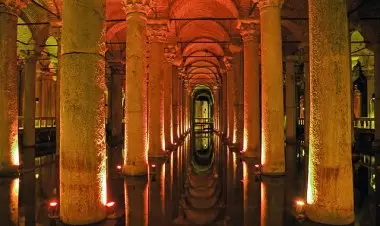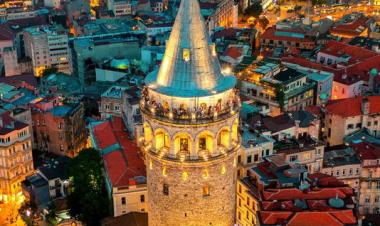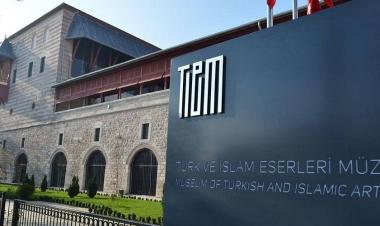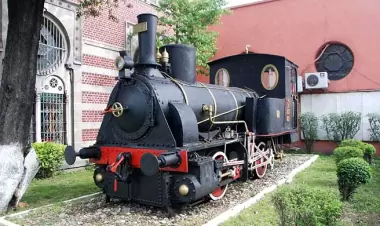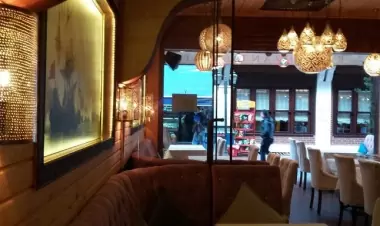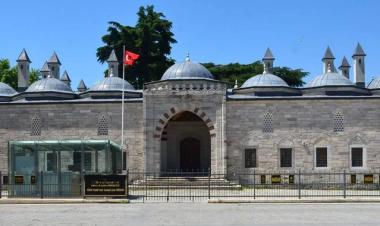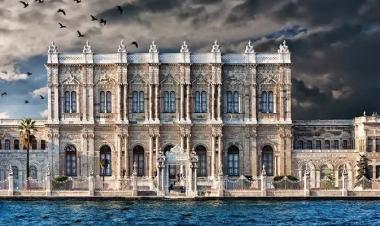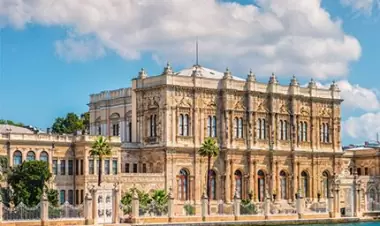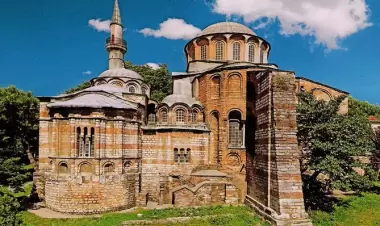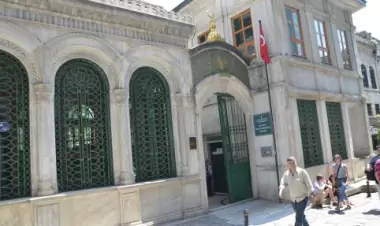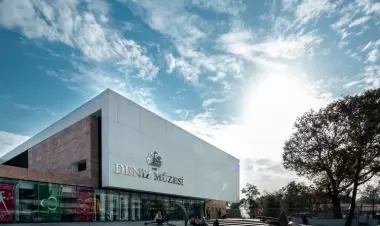Topkapi Palace
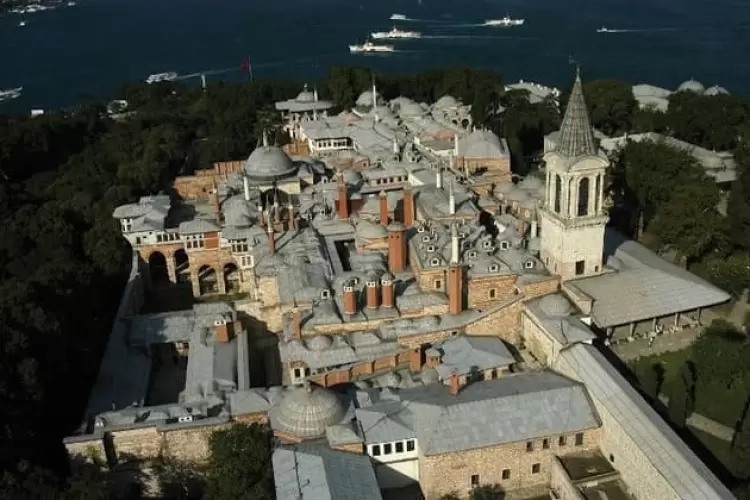
How to Explore Topkapi Palace:A Step-by-Step Guide

History

Topkapi Palace, a magnificent testament to Ottoman grandeur, was built by Sultan Mehmed II between 1459 and 1478, shortly after the conquest of Constantinople. This sprawling complex served as the administrative center and main residence of Ottoman sultans for nearly four centuries. The palace's name, which means "Cannon Gate Palace," reflects its strategic location overlooking the Bosphorus Strait.
Buildings

The palace complex consists of numerous buildings arranged around four main courtyards. Each courtyard served a specific purpose, from public gatherings to private royal quarters. Notable structures include the Imperial Council building, where the sultan's advisors met, and the Harem, which housed the royal family. The palace kitchens, capable of feeding thousands daily, showcase the scale of palace operations.
Architecture

Topkapi Palace's architecture blends Ottoman, Persian, and Byzantine influences. The complex features low-rise buildings interconnected by galleries and passages, with few structures exceeding two stories. Domed roofs, intricate tile work, and ornate decorations characterize the palace's esthetic. The layout emphasizes privacy and security, with access to inner courtyards becoming increasingly restricted.
Museum

In 1924, Topkapi Palace was transformed into a museum, opening its doors to the public in 1934. Today, it stands as one of the world's largest palace-museums, housing an extensive collection of Ottoman artifacts. Visitors can explore the Imperial Treasury, which displays priceless jewels and the famous Topkapi Dagger. The museum also showcases Ottoman clothing, weapons, armor, and illuminated manuscripts.
Hall

One of the most significant spaces in Topkapi Palace is the Audience Hall, or Arz Odası. This ornate chamber is where the sultan received foreign ambassadors and conducted important state business. The hall's opulent decoration, including intricate tile work and gilded surfaces, reflects the Ottoman Empire's power and wealth. It provides visitors with a glimpse into the ceremonial life of the Ottoman court and the grandeur of imperial receptions.
Planning Your Visit to Topkapi Palace

Best Time to Visit

To make the most of your Topkapi Palace experience, timing is crucial. The best time to visit is during the shoulder seasons of March to May or September to November. These months offer pleasant weather and fewer crowds, allowing you to explore the palace comfortably. If possible, plan your visit for a Monday morning when the palace tends to be less busy. Avoid Wednesdays, Fridays, weekends, and holidays, as these are typically the most crowded days.
Ticket Options
You have several ticket options when visiting Topkapi Palace. The most convenient choice is to purchase a combined ticket that includes access to both the palace and the Harem section. As of September 2024, the combined ticket price is 1700 TL. To save time and avoid long queues, consider buying your tickets online in advance. This allows you to skip the ticket line and head straight to the security check.
What to Bring
When visiting Topkapi Palace, it's essential to bring comfortable walking shoes as you'll be covering a lot of ground. The palace complex is vast, spanning 350 hectares, so be prepared for extensive walking. Don't forget to bring your camera, as photography is allowed in most areas of the palace, except for certain museum halls. If you plan to visit the Holy Relics Chamber in the Fourth Courtyard, ensure you're dressed appropriately, covering your shoulders and knees.
Seasonal Visit
The palace's opening hours vary depending on the season. During the summer season (April 1st to October 1st), Topkapi Palace, including the Harem and Hagia Irene, is open from 9 AM to 6 PM. In the winter season (October 1st to April 1st), the hours are 9 AM to 4:45 PM. Keep in mind that the palace is closed every Tuesday and on certain holidays, so plan your visit accordingly.
Restrictions
While exploring Topkapi Palace, be aware of some restrictions. Photography is not allowed inside the museum halls, so respect these rules during your visit. Additionally, there's no specific dress code for most areas of the palace, but modest attire is recommended, especially for the Sacred Relics Department.
Exploring the First Court

As you enter Topkapi Palace through the Imperial Gate, you'll find yourself in the First Court, a spacious area that serves as a transition between the city and the palace proper. This courtyard played a crucial role in the daily life of the palace and offers a glimpse into the Ottoman Empire's grandeur.
Imperial Gate
The Imperial Gate, known as Bâb-ı Hümâyûn in Turkish, is the main entrance to Topkapi Palace. Built in 1478 during the reign of Sultan Mehmed II, this massive structure has a central arch leading to a high-domed passage. The gate is adorned with gilded Ottoman calligraphy, featuring verses from the Qur'an and the tughras (signatures) of sultans.
In the past, a wooden apartment sat above the gate, serving various purposes. It was used as a pavilion by Mehmed II, a storage area for unclaimed property, and even as a vantage point for the ladies of the harem during special occasions. Today, the gate stands as a testament to Ottoman architectural prowess and serves as your first introduction to the palace's grandeur.
Hagia Irene Church
One of the most significant structures in the First Court is the Hagia Irene Church. This Byzantine church, dating back to the 4th century, has a unique history. Unlike many other Byzantine churches in Istanbul, Hagia Irene was never converted into a mosque. Instead, it served various purposes throughout history.
After the Ottoman conquest, the church was used as an arsenal for the Janissaries, earning it the name İçCebehane or "Inner Arsenal." Later, during the reign of Ahmed III in the 18th century, it functioned as an armory known as Dar-ül Esliha or "House of Weapons." In the 19th and early 20th centuries, it housed the Museum of Antiquities and the Military Museum.
Today, Hagia Irene operates as a museum and concert hall, known for its exceptional acoustics. Its architectural features, including its dome and mosaics, offer visitors a glimpse into Byzantine art and architecture. The church's survival and repurposing throughout the centuries make it a unique part of Topkapi Palace's rich history.
Discovering the Second Court

As you pass through the Gate of Salutation, you'll enter the heart of Topkapi Palace. The Second Court, unlike typical European palaces, features a series of pavilions, kitchens, barracks, audience chambers, and kiosks arranged around a central enclosure. This unique layout reflects the Ottoman approach to palace design.
Palace Kitchens
On the right side of the courtyard, you'll find the impressive palace kitchens. These massive structures, with their distinctive high chimneys, played a crucial role in palace life. The kitchens not only fed the Ottoman royal family but also thousands of palace staff daily. Today, these buildings house an extensive collection of kitchen utensils and Chinese porcelain.
The palace kitchens consist of ten domed buildings, including the Imperial kitchen, Harem kitchen, and confectionery kitchen. At their peak, they employed over 800 staff members and prepared food for about 4,000 people. The kitchens showcase the grandeur of Ottoman culinary traditions and the importance of food in palace life.
One of the most fascinating sections is the Helvahane or confectionery kitchen. Here, skilled chefs created a wide array of sweets, including the famous halva, as well as syrups, preserves, and even fragrant soaps. Each sultan would request a unique halva recipe upon ascending to the throne, resulting in 36 different types created between the 15th and 19th centuries.
Imperial Council Chamber
On the left side of the Second Court stands the ornate Imperial Council Chamber, known as Dîvân-ı Hümâyûn. This three-story building played a pivotal role in governing the vast Ottoman Empire. The council, led by the Grand Vizier, met here four times a week to discuss matters of state.
The chamber's most intriguing feature is a small, grille-covered window high on the wall. This allowed the sultan to secretly observe council meetings, ensuring he stayed informed about government affairs without being present. The window connected directly to the sultan's private quarters in the harem.
Inside, the Imperial Council Chamber consists of three adjoining rooms. The main chamber, called Kubbealtı or "under the dome," is where the council held its deliberations. The other rooms housed secretarial staff and clerks who kept records of the meetings.
The Imperial Council Chamber at Topkapi Palace offers visitors a glimpse into the inner workings of Ottoman governance and the sophisticated administrative system that managed one of history's most powerful empires.
Unveiling the Secrets of the Harem

As you step into the Imperial Harem of Topkapi Palace, you enter a world of intrigue and power. This vast complex, consisting of over 400 rooms, served as the private quarters for the Ottoman sultans and their families for centuries. The harem's layout reflects its importance within the palace, occupying a central position that signifies its growing influence in Ottoman political life.
Structure and Layout
The harem's architecture is a maze-like collection of buildings, courtyards, and corridors, each addition reflecting the needs and tastes of successive generations. As you enter, you'll find yourself in the Hall of Ablution Fountains, a beautifully tiled room that serves as the entrance to this secluded world. From here, you'll proceed to the Courtyard of the Eunuchs, where entrances lead to various sections, including the Dormitories of the Eunuchs and the School of the Princes.
Notable Rooms
One of the most impressive spaces in the harem is the Imperial Hall, a large and ornate room designed to awe visitors. This hall marks the beginning of the sultan's private area within the harem complex. Another notable room is the Privy Room of Murad III, the oldest surviving structure in the harem, built in 1579 by the renowned Ottoman architect Sinan. Its dome and intricate Iznik tile decorations showcase the pinnacle of Ottoman architectural artistry.
Pool
Among the harem's unique features is an open pool where the sultan would sometimes have his concubines perform for his entertainment. This area provides insight into the more leisurely aspects of harem life and the complex relationships between the sultan and the women of the harem.
Diplomatic Structures
The harem also housed important diplomatic structures. The Imperial Council building, located near the harem, was where the Grand Vizier and other council ministers held meetings. This proximity allowed the sultan to secretly observe these meetings through a small, grille-covered window, maintaining his oversight of state affairs while remaining unseen.
Marveling at the Third Court Treasures

As you enter the Third Court of Topkapi Palace, you'll find yourself in the heart of the sultan's private domain. This area houses some of the most precious and awe-inspiring treasures of the Ottoman Empire.
Imperial Treasury
Located on the eastern edge of the Third Court, the Imperial Treasury of Topkapi Palace showcases an incredible collection of objects that will take your breath away. The building itself, constructed during Mehmet the Conqueror's reign in 1460, originally served as reception rooms. Today, it houses a dazzling array of artifacts made from or decorated with gold, silver, rubies, emeralds, jade, pearls, and diamonds.
When exploring the Imperial Treasury, keep an eye out for the jewel-encrusted Sword of Süleyman the Magnificent and the extraordinary Throne of Ahmed I, also known as the Arife Throne. This masterpiece is inlaid with mother-of-pearl and was designed by Sedefhar Mehmet Ağa, the architect of the famous Blue Mosque.
Don't miss the Treasury's famous Topkapi Dagger, which features three enormous emeralds on the hilt and a watch set into the pommel. Another highlight is the Kasıkçı (Spoonmaker's) Diamond, a teardrop-shaped 86-carat rock surrounded by dozens of smaller stones. This impressive gem was first worn by Mehmet IV at his accession to the throne in 1648.
Sacred Safekeeping Rooms
On the other side of the Third Court, you'll find the Sacred Safekeeping Rooms. These rooms, sumptuously decorated with İznik tiles, house many relics of the Prophet Muhammad. During the Ottoman era, these rooms were opened only once a year, on the 15th day of Ramadan, for the imperial family to pay homage to the Prophet's memory.
One of the most intriguing aspects of these rooms is the reverence given to even the dust within them. The belief was that every particle absorbed the spiritual aura of the sacred relics. Visitors and palace staff observed strict rituals to preserve this sanctity, meticulously washing their hands in a special fountain before entering and upon exiting the rooms.
Enjoying the Fourth Court and Views

As you step into the Fourth Court of Topkapi Palace, you'll discover a serene retreat that offers both architectural marvels and breathtaking vistas. This area, also known as the Imperial Sofa, served as a private sanctuary for the sultan and his family.
Pleasure Pavilions
The Fourth Court boasts an array of exquisite pleasure pavilions, each with its own unique charm. One of the most notable structures is the Baghdad Kiosk, built in 1639 to commemorate Sultan Murat IV's victory over Baghdad. This pavilion showcases the pinnacle of classical palace architecture, featuring stunning Iznik tiles, a painted ceiling, and intricate mother-of-pearl and tortoiseshell inlays.
Another gem is the gilded Iftar Pavilion, constructed by Sultan Ibrahim. This whimsical structure served as a picturesque spot for the sultan to break his fast during Ramadan. The pavilion's name, "Iftariye," reflects this tradition. From here, the sultan could also enjoy watching sporting events in the courtyard below.
The Circumcision Room, believed to have been built during the reign of Sultan Süleyman the Magnificent, is another fascinating structure. Despite its name, this pavilion was used for the important religious tradition of circumcising young princes.
Panoramic Vistas
The Fourth Court of Topkapi Palace offers some of the most stunning views in Istanbul. As you explore this area, you'll be treated to panoramic vistas of the Golden Horn, the Bosphorus Strait, and the Sea of Marmara. These sweeping views played a significant role in the placement of various structures within the palace complex.
The Mecidiye Kiosk, built by Sultan Abdül Mecit in the 19th century, is strategically positioned to take advantage of these breathtaking views. This European-style pavilion represents a departure from traditional Ottoman architecture and reflects the changing tastes of the later sultans.
As you wander through the Fourth Court, take a moment to appreciate the Marble Terrace. This platform features a decorative pool and provides an excellent vantage point to soak in the surrounding beauty. The terrace is flanked by three pavilions, each offering its own unique perspective on the stunning landscape.
Shopping

After exploring the grandeur of Topkapi Palace, you might want to take home a piece of Ottoman history. The palace offers several opportunities for shopping, allowing you to find unique souvenirs and gifts.
Gift Stores
Within Topkapi Palace, you'll find gift shops that offer a wide range of items inspired by the museum's collections. These stores showcase replicas of Ottoman artifacts, including miniature versions of the famous Topkapi Dagger, decorative plates featuring intricate Ottoman designs, and beautifully crafted jewelry inspired by the Imperial Treasury.
One popular item is the "Ya Fettah Door Knocker," a spiritual frame reminiscent of Hagia Sophia's legacy. For those interested in Ottoman weaponry, you can find replicas of ceremonial swords, shields, and helmets. These items, while not authentic antiques, serve as excellent reminders of your visit to this historic site.
Places Must Seen Near
After your shopping experience at Topkapi Palace, consider visiting nearby attractions. Gulhane Park, once the royal garden of the Ottoman Empire, is now a public park offering tranquility and natural beauty. It's perfect for a leisurely stroll or a picnic, with scenic views of the Bosphorus.
The Museum of the History of Science and Technology in Islam, located within Gulhane Park, provides an educational experience that complements your visit to Topkapi Palace. Here, you can explore the contributions of Islamic scholars to various scientific fields.
Connection to Sultanahmet
Topkapi Palace is conveniently located in the heart of Istanbul's historic district. From the palace, it's easy to reach other major attractions in Sultanahmet. You can take a short 8-minute walk to reach Hagia Sophia or an 11-minute walk to the Blue Mosque.
For those preferring public transportation, the tram is a convenient option. Take the T1 tram from Gulhane station to Sultanahmet station, which is just a few stops away.
Gulhane Way
The Gulhane Way offers a pleasant route from Topkapi Palace to other parts of the city. This path takes you through Gulhane Park, allowing you to enjoy the lush greenery and historical monuments like the Goths' Column. As you walk, you'll be treated to stunning views of the Bosphorus, making it a picturesque journey from the palace to other parts of Istanbul.
Harem Section

The harem of Topkapi Palace was a private and sacred space, off-limits to most men. This section of the palace housed the sultan's family, concubines, and female servants. The harem's layout reflected its importance, occupying a central position within the palace complex.
Empire Redeems
The harem played a crucial role in Ottoman politics and culture. As the empire expanded, the harem population grew, leading to an increase in expenditures. During Ibrahim's reign (1640-1648), harem expenses saw a significant 28% increase. This growth put a strain on the state treasury, as sultans spent more time in the harem than leading military campaigns.
Islamic Gifts
The harem was not just a place of residence but also a center of education and culture. Young girls received training in religion, music, dance, poetry, and the complex arts of love. They learned to read, write, and tell stories, skills that were highly valued in Ottoman society. The most talented and beautiful among them could rise through the ranks, potentially becoming favorites of the sultan.
Prophet Mohammed Items
Topkapi Palace houses some of the most precious relics in Islam, including items believed to have belonged to Prophet Mohammed. These sacred objects are kept in the Pavilion of the Holy Mantle, located in the Third Court. The collection includes the Prophet's mantle, two of his swords, hairs from his beard, a tooth, and an impression of his footprint.
Staff of Moses
Among the religious relics displayed in Topkapi Museum is the staff of Moses, a figure revered in Islam, Judaism, and Christianity. This artifact, along with other items such as Abraham's pot and David's sword, is housed in the Destimal Chamber. These relics showcase the Ottoman Empire's vast reach and its role as a custodian of important religious artifacts from various faiths.
The harem section of Topkapi Palace offers visitors a glimpse into the private lives of Ottoman rulers and the complex social structure that supported the empire. Today, it stands as a testament to the rich history and cultural significance of this remarkable palace complex.
Nearest Places

After exploring Topkapi Palace, you'll find several fascinating attractions within easy reach. These nearby places offer a rich tapestry of Istanbul's history and culture.
Sultanahmet Square
Just a short walk from Topkapi Palace, Sultanahmet Square is the heart of Istanbul's historic district. This bustling area, once the site of the ancient Hippodrome, is surrounded by iconic landmarks. You'll find the Blue Mosque and Hagia Sophia facing each other across the square, creating a stunning visual backdrop. The square is perfect for people-watching, with plenty of benches and a colorful fountain to enjoy.
Hagia Sophia
A stone's throw from Topkapi Palace stands the magnificent Hagia Sophia. This architectural marvel has served as a church, mosque, museum, and now once again as a mosque. Its massive dome and intricate mosaics showcase the pinnacle of Byzantine architecture. As of 2024, visitors can explore the famous upper galleries, which offer a unique perspective on this wonder of human achievement.
Gülhane Park
Adjacent to Topkapi Palace, Gülhane Park provides a peaceful retreat from the city's hustle and bustle. Once the private garden of the Ottoman sultans, it's now a public park where you can enjoy leisurely strolls, picnics, and stunning views of the Bosphorus. The park is particularly beautiful during the Istanbul Tulip Festival when thousands of tulips bloom.
Eminönü
A short tram ride from Topkapi Palace brings you to Eminönü, a vibrant waterfront area. Here, you can explore the bustling Spice Bazaar, sample delicious street food, or take a Bosphorus tour from the busy ferry terminal. The iconic Galata Bridge, where locals fish from its upper level, connects Eminönüto other parts of the city.
Sirkeci
Nearby Sirkeci is home to the historic Sirkeci Railway Station, once the final stop of the famous Orient Express. Today, it serves as a transportation hub, making it easy to explore other parts of Istanbul. The area around Sirkeci is filled with small shops and restaurants, offering a glimpse into local life.
F.A.Q about Topkapi Palace

Is a guided tour necessary at Topkapi Palace?
A guided tour can enhance your experience at Topkapi Palace, especially if you prefer not to wait in long queues. A knowledgeable guide will not only lead you through the main attractions but also provide detailed insights into the palace's stunning Ottoman architecture.
How long should I plan to spend at Topkapi Palace?
To thoroughly enjoy all that Topkapi Palace has to offer, it is recommended to allocate at least 2 to 3 hours for your visit. This duration allows you to explore the various sections and historical elements of the palace comprehensively.
Is Topkapi Palace worth visiting if I only have one day in Istanbul?
Absolutely, visiting Topkapi Palace is recommended even if your time in Istanbul is limited. To make the most of your visit, consider pre-purchasing your tickets and opting for a skip-the-line tour. This allows you to explore the palace's four courtyards, including the Audience Hall, High Court, Historical Kitchens, and The Treasury.
What should I wear when visiting Topkapi Palace?
Comfort is key when visiting Topkapi Palace due to the amount of walking involved. There is no specific dress code required for entry. However, please note that access to the Harem section requires a separate ticket, which is not included with the standard palace admission.
View On Map
Loc: 41.011344, 28.9832034
Content Index
Others in Same Category
This site was created by a person who was born in Istanbul and is a lover of Istanbul, with the aim of introducing the beauties of the city to be discovered.
If you are planning to visit Istanbul or would like to get more information, you can contact with us via contact us button on below:
Contact Us

